 Overview
Overview
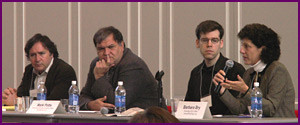 Identifying a need that can be filled is the first step in launching a community news venture. After that, the models can be quite varied. Some, such as NewWest.net, the “Voice of the Rocky Mountains,” are launched by an individual journalist who raises some start-up money and collaborates with other contributors.
Identifying a need that can be filled is the first step in launching a community news venture. After that, the models can be quite varied. Some, such as NewWest.net, the “Voice of the Rocky Mountains,” are launched by an individual journalist who raises some start-up money and collaborates with other contributors.
Others, such as VoiceofSanDiego.com, were the brainchild of a former newspaper columnist who teamed with a private philanthropist, who provided enough seed capital to hire a full-time editor to make it happen.Still others, like Backfence.com, aspire to be for-profit enterprises and are targeting affluent communities and attracting venture capital money.
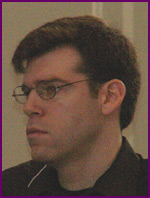 “We’re still in the beginning stages of what’s happening, but this isn’t a fringe thing anymore,” said Rob Runett, NAA Director of Electronic Media Communications, as he opened a panel discussion on how to begin citizens media ventures.
“We’re still in the beginning stages of what’s happening, but this isn’t a fringe thing anymore,” said Rob Runett, NAA Director of Electronic Media Communications, as he opened a panel discussion on how to begin citizens media ventures.
Runett said the target audience for the new media are 18- to 34-year-olds.
Other things to think about, according to Runett, are:
- Mission motivations.
- Startup funding.
- A content plan.
- Staff size, titles and responsibilities.
- Whether or not to edit.
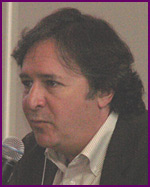 Jonathan Weber, editor and founder, NewWest.net, was living and teaching in Missoula, Mont., when he realized there was a dearth of coverage on important developments in the Rocky Mountain West. In the summer of 2004, the veteran print and online journalist began planning New West, a local and regional publication with content about Missoula, Boulder, Salt Lake City, northern Idaho, Albuquerque and Santa Fe, among other areas. He wrote a business plan and raised “several hundred thousand dollars.”
Jonathan Weber, editor and founder, NewWest.net, was living and teaching in Missoula, Mont., when he realized there was a dearth of coverage on important developments in the Rocky Mountain West. In the summer of 2004, the veteran print and online journalist began planning New West, a local and regional publication with content about Missoula, Boulder, Salt Lake City, northern Idaho, Albuquerque and Santa Fe, among other areas. He wrote a business plan and raised “several hundred thousand dollars.”
It took six weeks to build the site, beginning in January 2005. Weber describes NewWest.net as a hybrid of “professional and non-professional journalism” – a blend between a blog and an online newspaper. He said it has about 20 regular contributors and many occasional contributors. Some are paid. Some are not. Some are professional journalists, some are aspiring journalists and some are outside experts on a variety of topics.
“It seemed to me there was really a tipping point happening in the media world,” Weber said of the increasing presence of micro-local media.
“Getting good contributions from community members and people who are not journalists is not something that just happens.”
-Weber
He said he has spent little on marketing, preferring to dedicate money to content. He spends a fair amount of time recruiting and nurturing contributors.
The site no longer calls its contributors “citizen journalists.” “We found that the term ‘citizen journalism‘ worked very poorly,” he said. “People who were not journalists were very intimidated by the idea of being called a journalist. … People who were journalists or were aspiring to be journalists didn’t want to be merely ‘citizen’ journalists – that was kind of an insult to someone who thinks of themself as a journalist. … So we have dumped that terminology.” Now they label citizen contributions simply as “unfiltered.”
NewWest.net also offers a photo group in Flickr that takes photo contributions. NewWest pulls photos for the site from the page.
Weber said he expects the site, which is supported by ads, to be profitable in 18 months to two years.
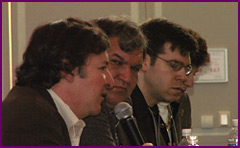 The site features:
The site features:
- 10 to 15 new stories a day and a featured photo.
- A “direct and conversational” style.
- An “open point of view.”
- Heavy use of linking and pointing.
- A reputation for fairness and accuracy.
- Original reporting.
- An area called “unfiltered” for unedited contributions from citizens.
- Two (soon to be three) full-time employees.
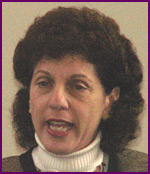 Barbara Bry, founding CEO and editor of VoiceofSanDiego.org, said that in the spring of 2004, a retired venture capitalist and a former local newspaper columnist decided to start an online news and information source for the San Diego region. By fall, she had signed on – temporarily – to get the site up and running.
Barbara Bry, founding CEO and editor of VoiceofSanDiego.org, said that in the spring of 2004, a retired venture capitalist and a former local newspaper columnist decided to start an online news and information source for the San Diego region. By fall, she had signed on – temporarily – to get the site up and running.
They decided the site would be a nonprofit – she said it would have more credibility that way – and seek foundation funding. Buzz Woolley, one of the site’s founders, provided $350,000 in startup funding for the site.
For content, the goal was to combine a small staff of paid journalists with the volunteer writers. In the beginning, VoiceofSanDiego.org was staffed by Bry as the editor, two full-time reporters, a half-time education writer, an assistant editor who helped with the Internet, a part-time technical person and a part-time office manager.
The site launched in February 2005 and made an immediate splash with its reporting on allegations of securities fraud by city officials.When Voice of San Diego was starting up, the founding members went out of their way to recruit certain “guest columnists” and “contributing voices” (as citizen contributors are called) who might help seed a network of other potential contributors. Relying heavily on their “contributing voices,” especially those of recruited community and business leaders, the site focuses on local government and K-12 education.
“I was surprised at the amount of free content I got,” Bry said.
“We made a very conscious decision to reach the most influential people in the community to begin with.”
-Bry
The site’s board of directors decided to edit everything, both from volunteer writers and from staff. Also, all volunteer contributions are tagged with an opinion logo to differentiate them from staff articles.
To raise money, Voice of San Diego started an individual membership program and a corporate sponsorship program. Memberships, which are donation-based much like PBS memberships, now bring in about $4,000 a week. The corporate sponsorships have been slow to develop, but Bry thinks that the site now has a big enough and influential enough audience to support an advertising model.
Bry said that the annual budget of VoiceofSanDiego.com is currently about $500,000, but that it needs to be $800,000 to $1 million to get the site to where it should be in the future.
Voice of San Diego applied for 501(c)3 nonprofit status in October, which is pending. As a 501(c)3 organization, Voice would not be allowed to endorse anyone for public office, but they could write columns about public officials and hold them accountable. Additionally, the site would still be allowed to have paid advertisements.
The site:
- Relies mostly on grassroots marketing, speeches to community groups and free publicity from radio and TV stations and the local newspaper.
- Has a donation-based membership program, similar to PBS, and lists members on the Web site.
- Has a corporate sponsorship program.
- Bought libel insurance for about $2,600 a year.
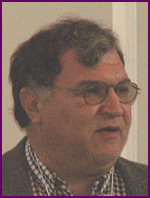 Mark Potts, co-founder of washingtonpost.com, created Backfence.com in August 2004 in the Washington, D.C., area to “capture the kind of information you shared over the back fence.” He is chairman and chief creative officer of the site, which recently raised $3 million in venture capital and has plans to move into additional markets around the country.
Mark Potts, co-founder of washingtonpost.com, created Backfence.com in August 2004 in the Washington, D.C., area to “capture the kind of information you shared over the back fence.” He is chairman and chief creative officer of the site, which recently raised $3 million in venture capital and has plans to move into additional markets around the country.
Backfence.com currently operates in the upscale communities of McLean and Reston, Va., and Bethesda, Md., with content that is supplied entirely by people who live there. It has community guides, event calendars, local business reviews, yellow pages, classifieds and a section called “voices.” He described the audience as “soccer moms, people who aren’t computer geeks” and said the site must be user-friendly.
Users are encouraged to use their real names when they post, and they are required to submit a verifiable e-mail address before they can post anything.
“You’ve really got to be in the community. If you build it, they will come doesn’t work.”
-Potts
Potts also said that he does not want to tell people how to write or what to cover. “We let community voices speak for themselves,” he said. “We’re not in the journalism education business.”
So far, the site has received mostly quality content. “There’s a real fear that you’re going to get just drivel. … That’s not been our experience.”
Potts said that Backfence does not edit or screen content other than to choose which stories go on the home page. However, there is a profanity filter, so if a user attempts to submit an article that contains one of the blocked words, it gets bounced back and the profanity must be removed before the item can be posted.
“The person who’s the hardware store owner also tends to be the Little League coach and also tends to be a dad. And that person is a potential advertiser, a potential contributor and a potential reader,” said Potts.
Other tips:
- Do grassroots marketing, speak to groups, attend fairs and hand out fliers.
- Build your own content management system.
- Require registration to post items as a way to screen out people who might post objectionable things.
- Engage the community.
Jump to other panel summaries:
I. Starting Up: Why, What, and How
II. Examining Mainstream Models
III. Making Tech Tools Work For You
IV: Managing The Community: Getting The Content You Need And Quality You Want






